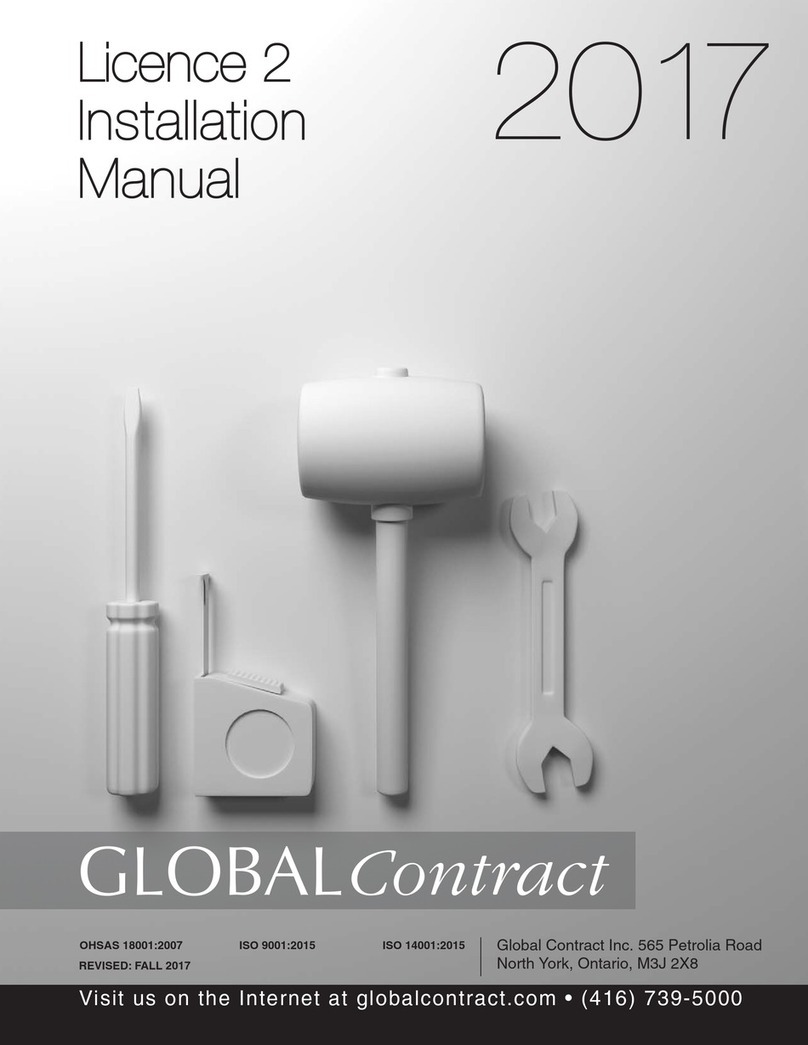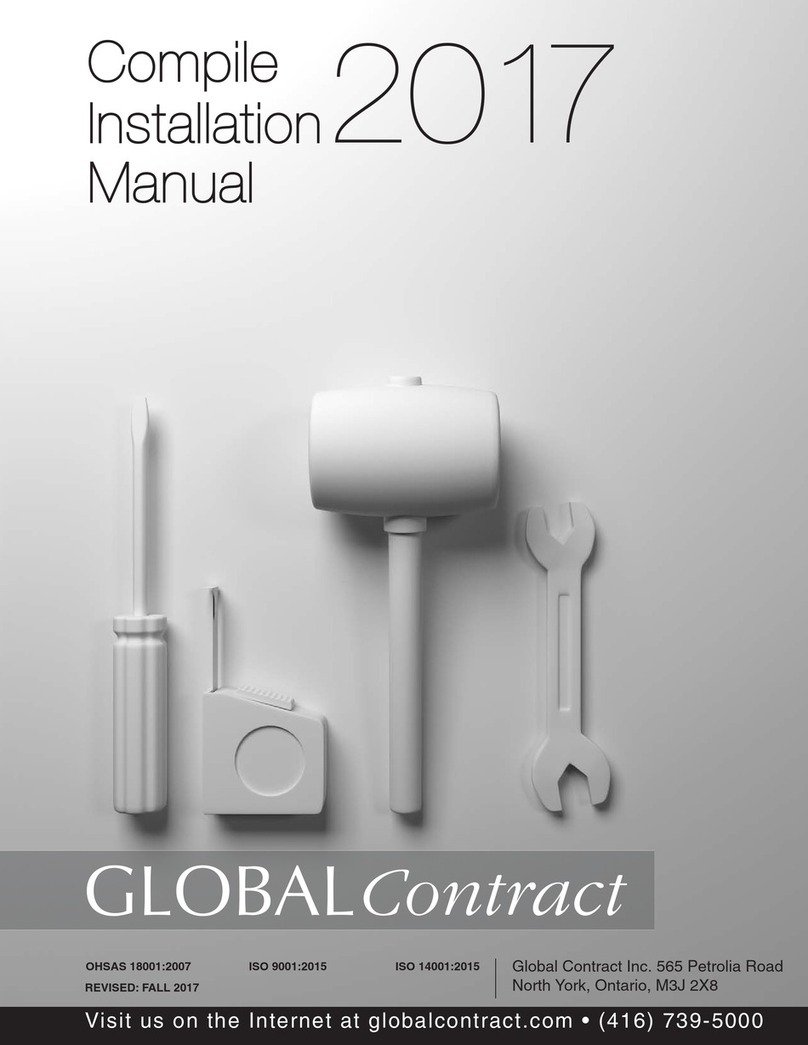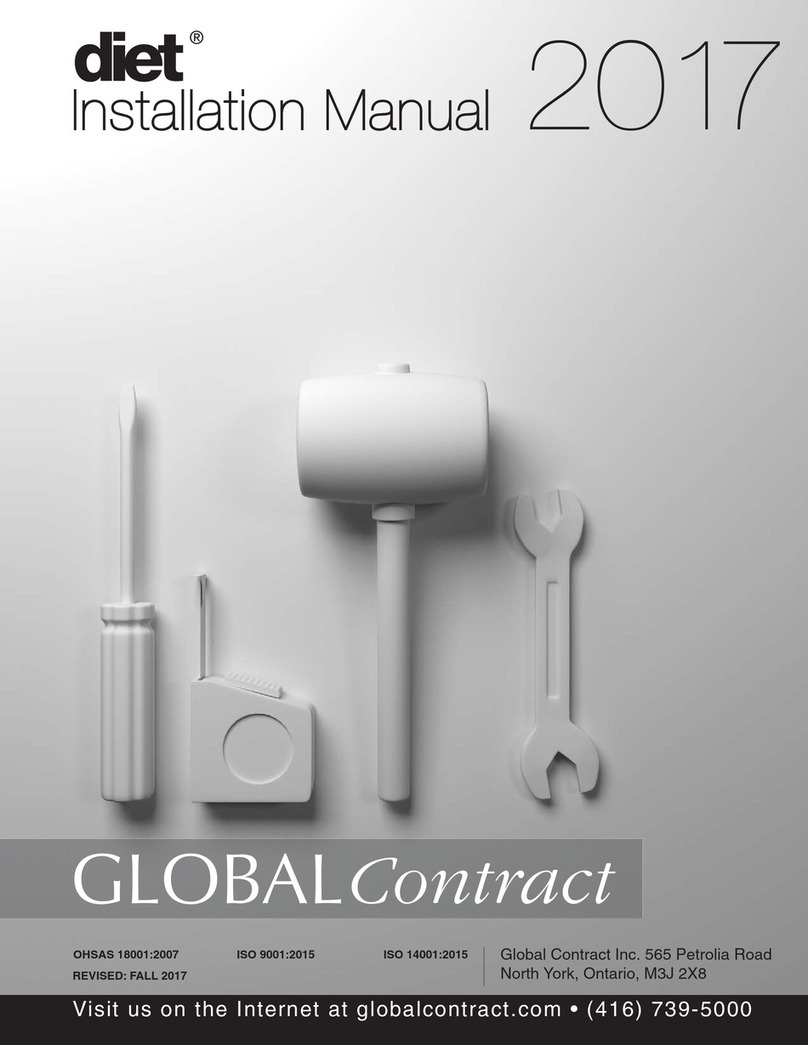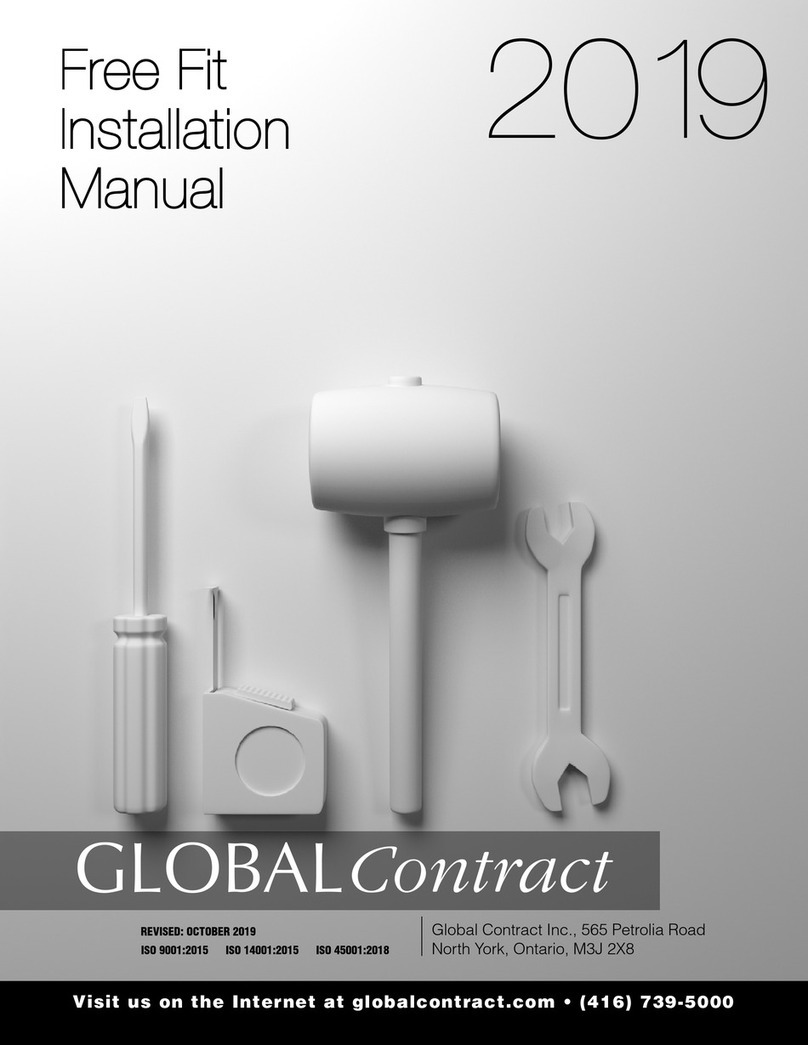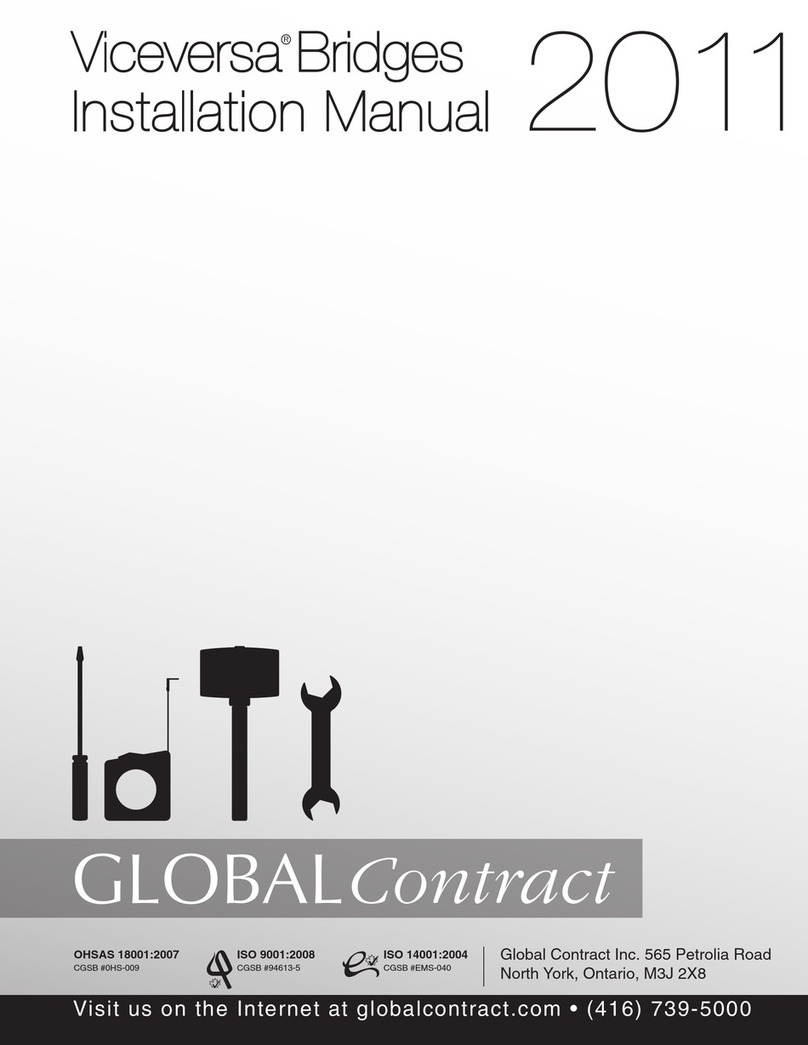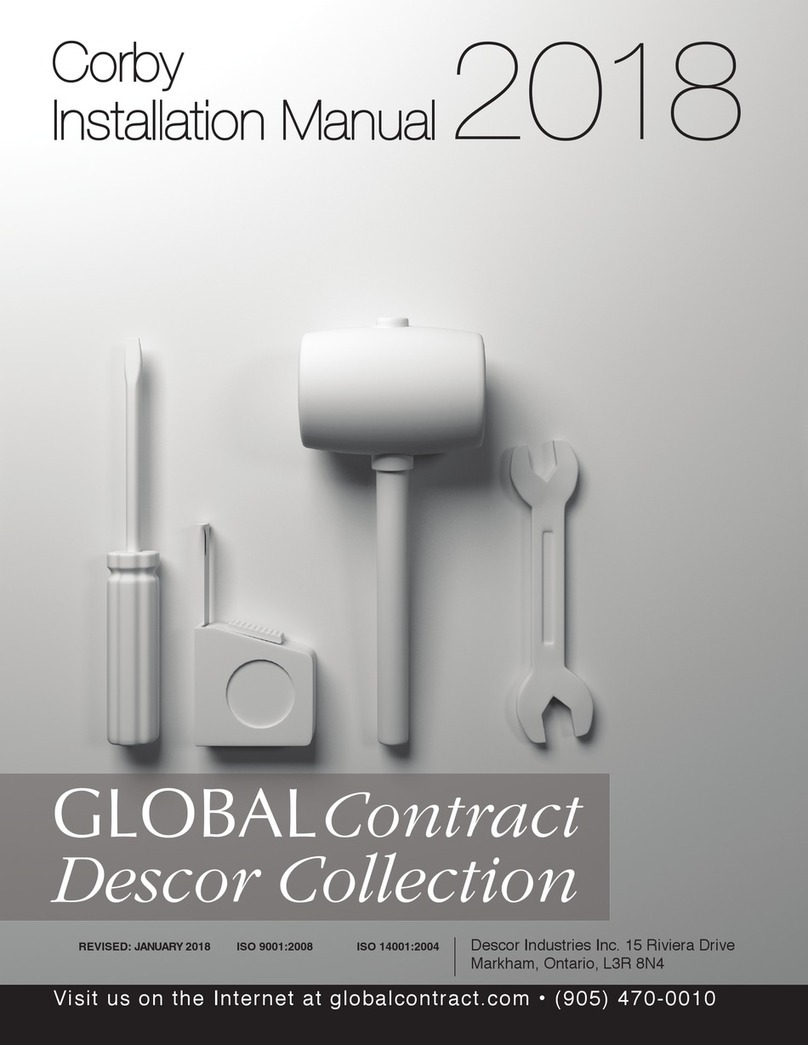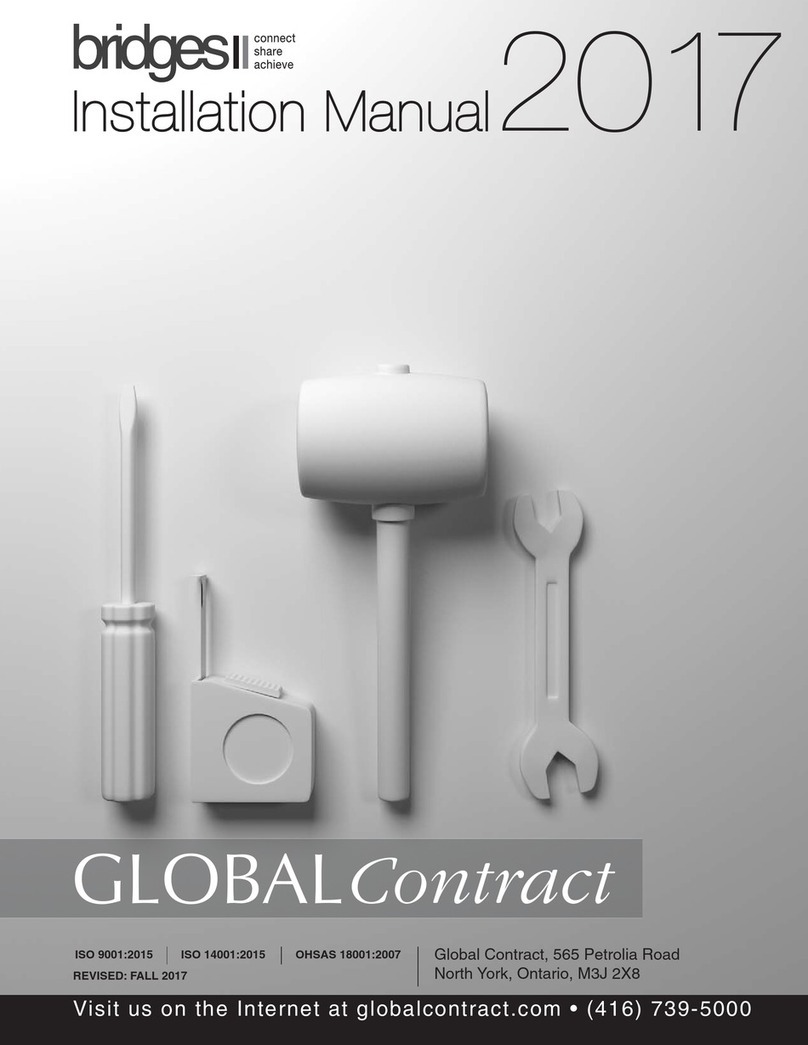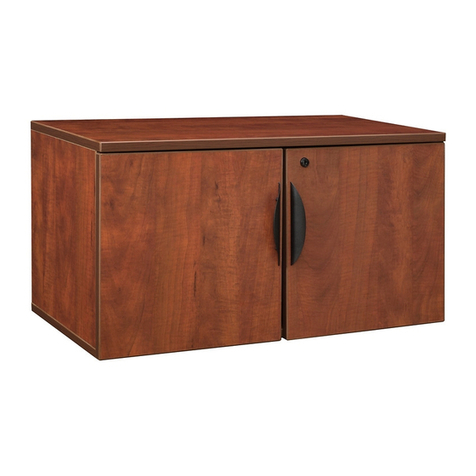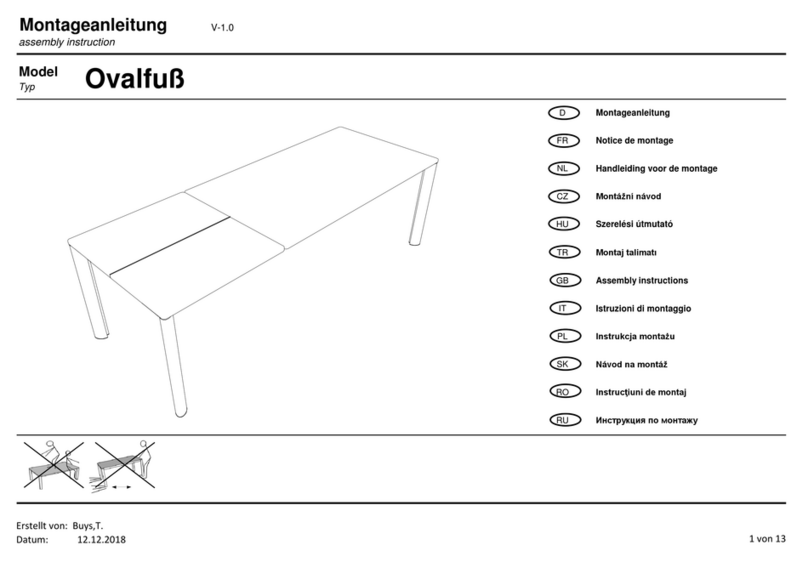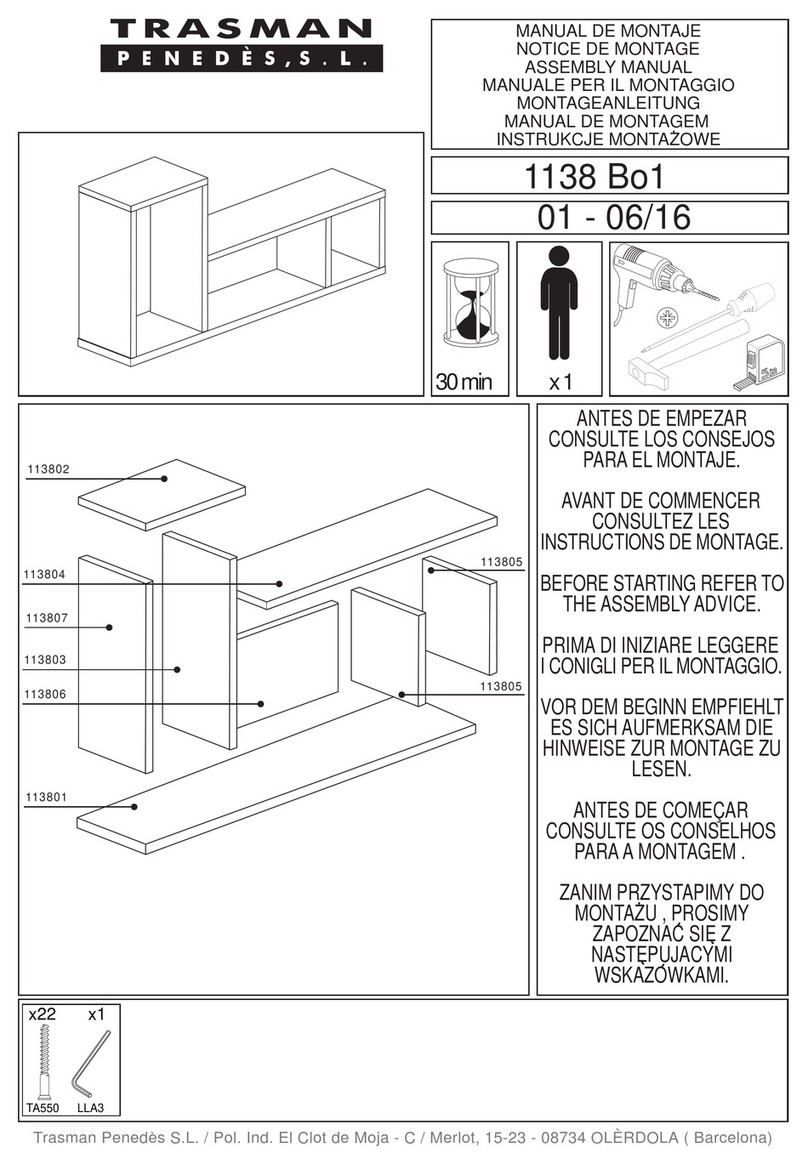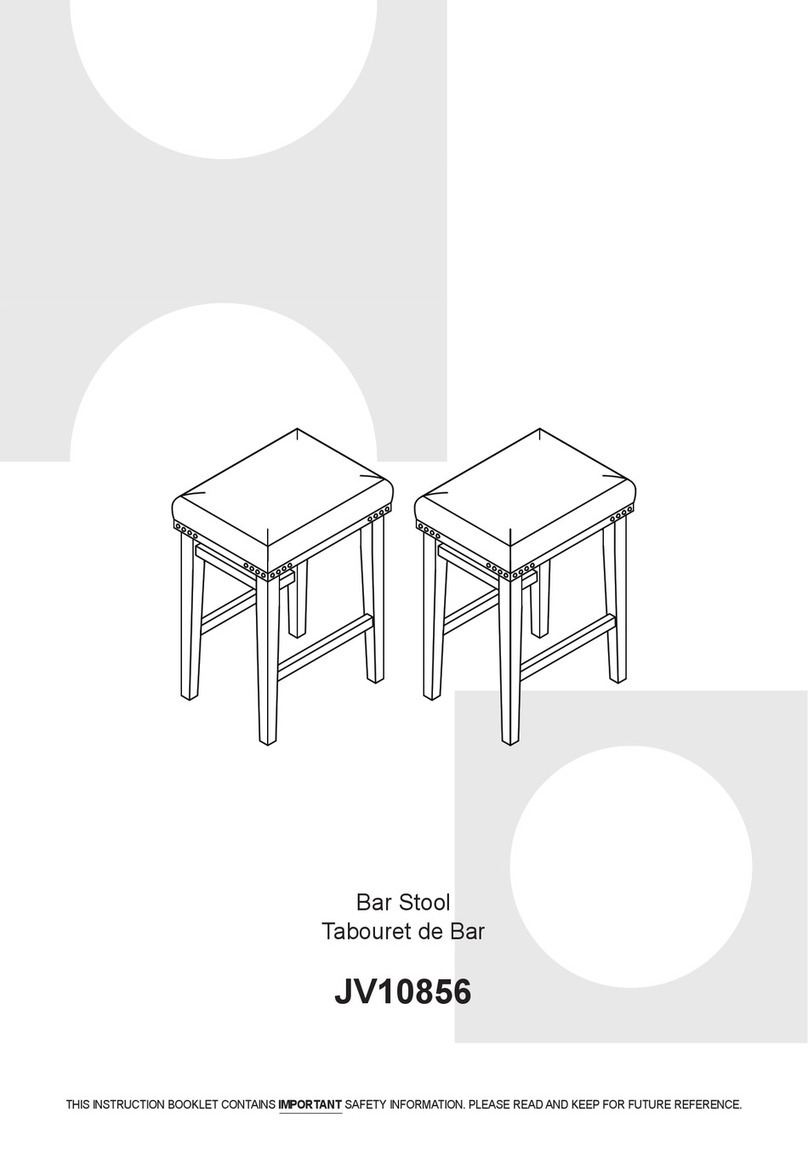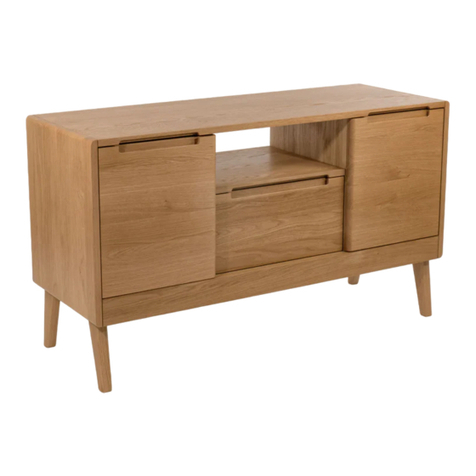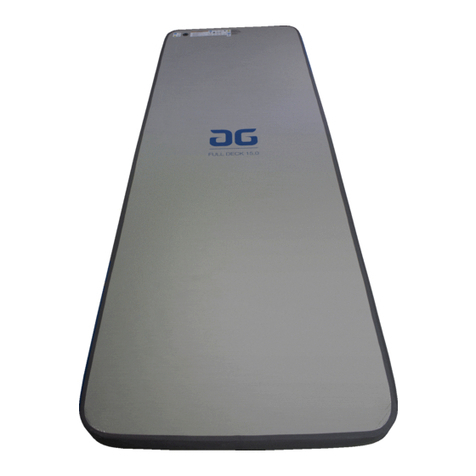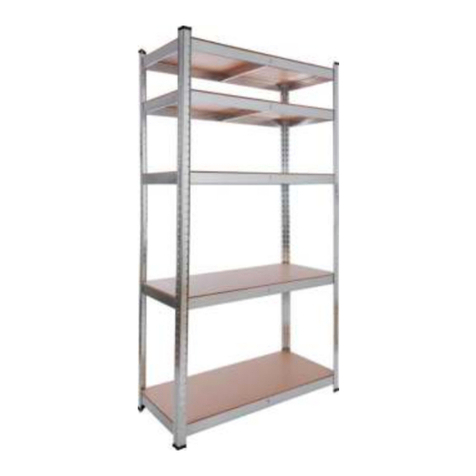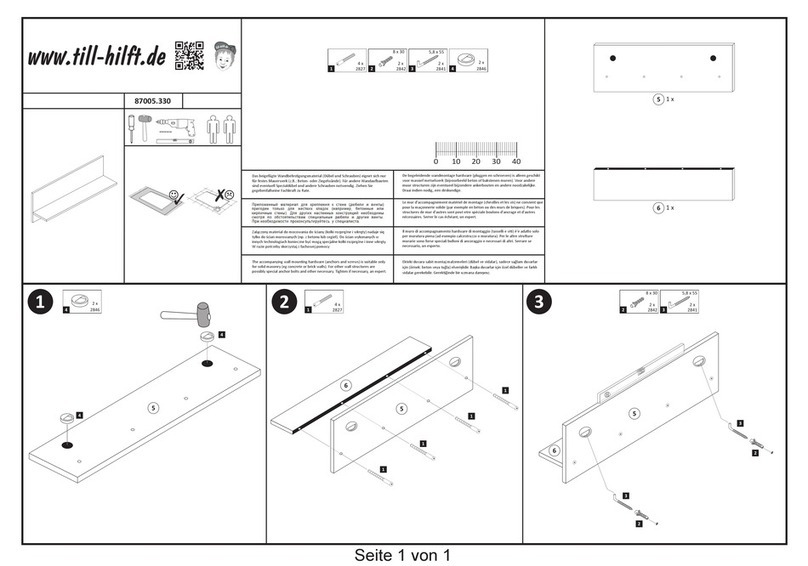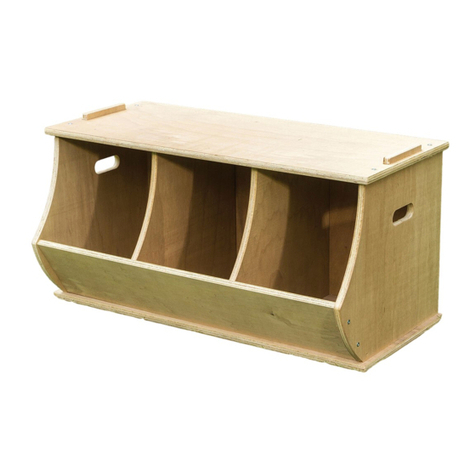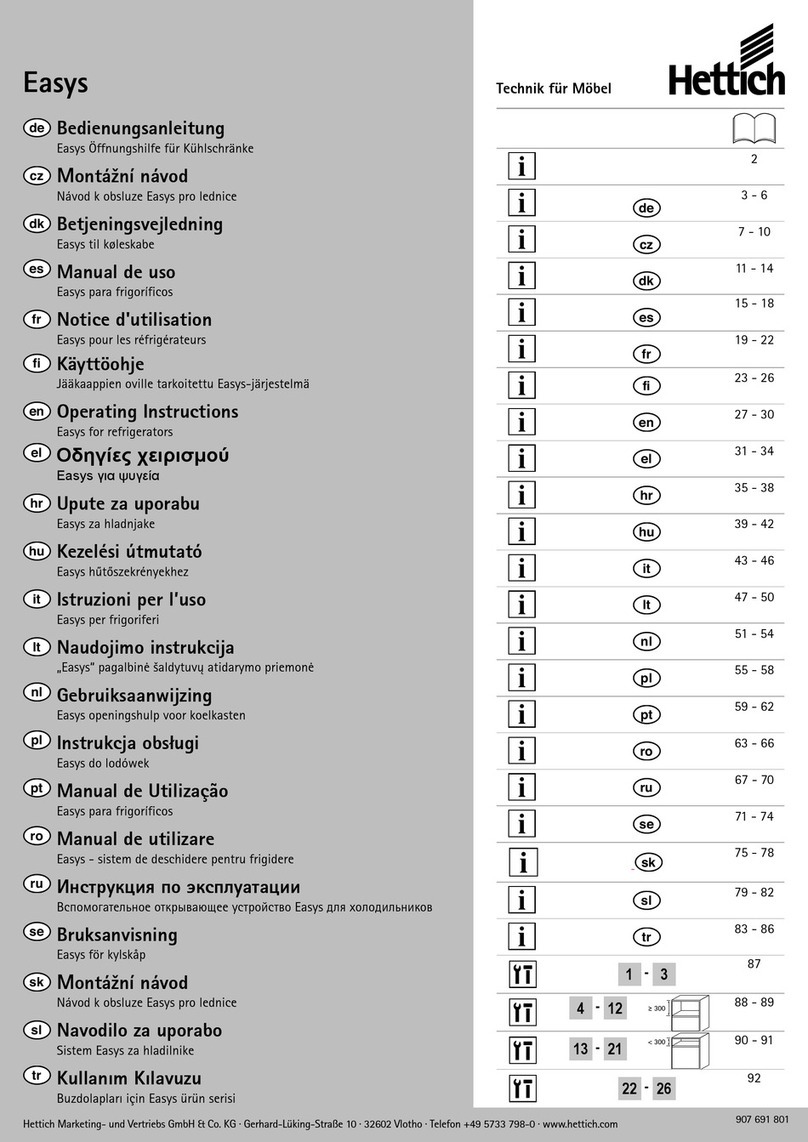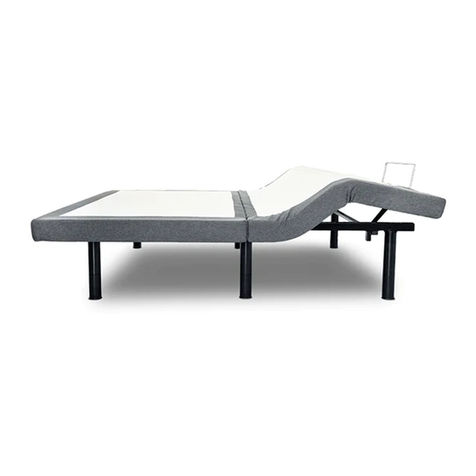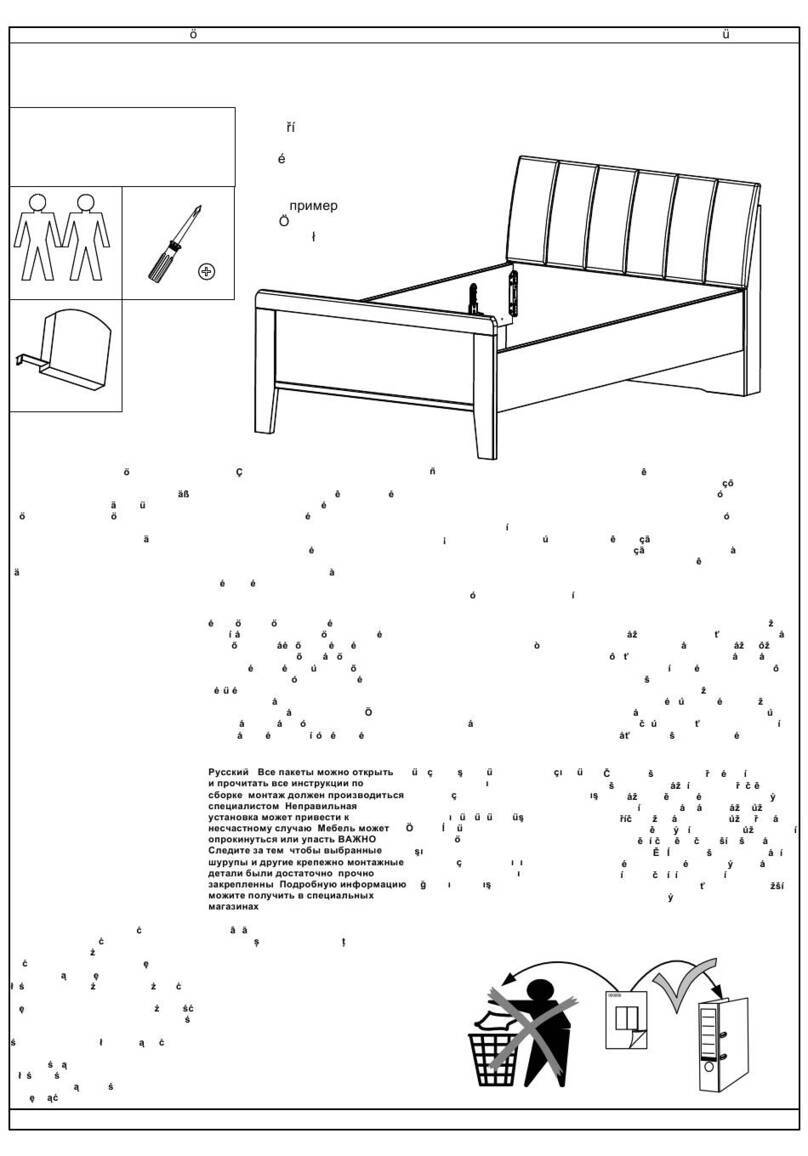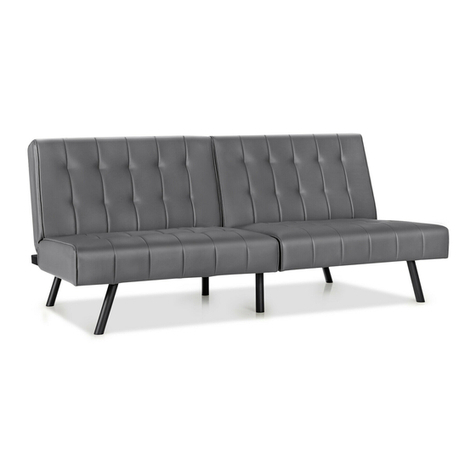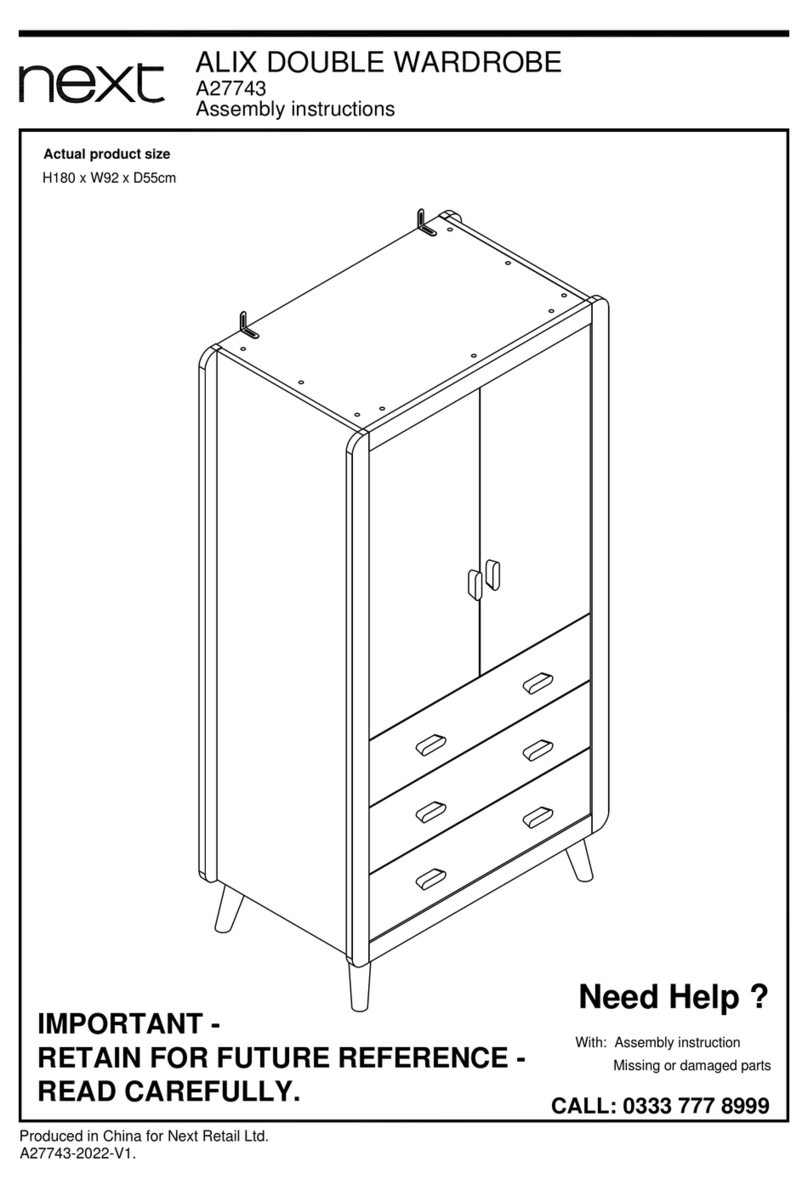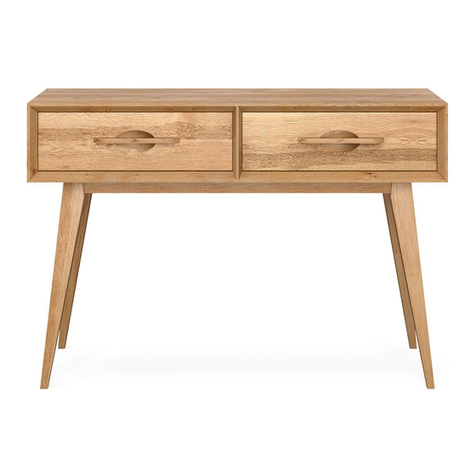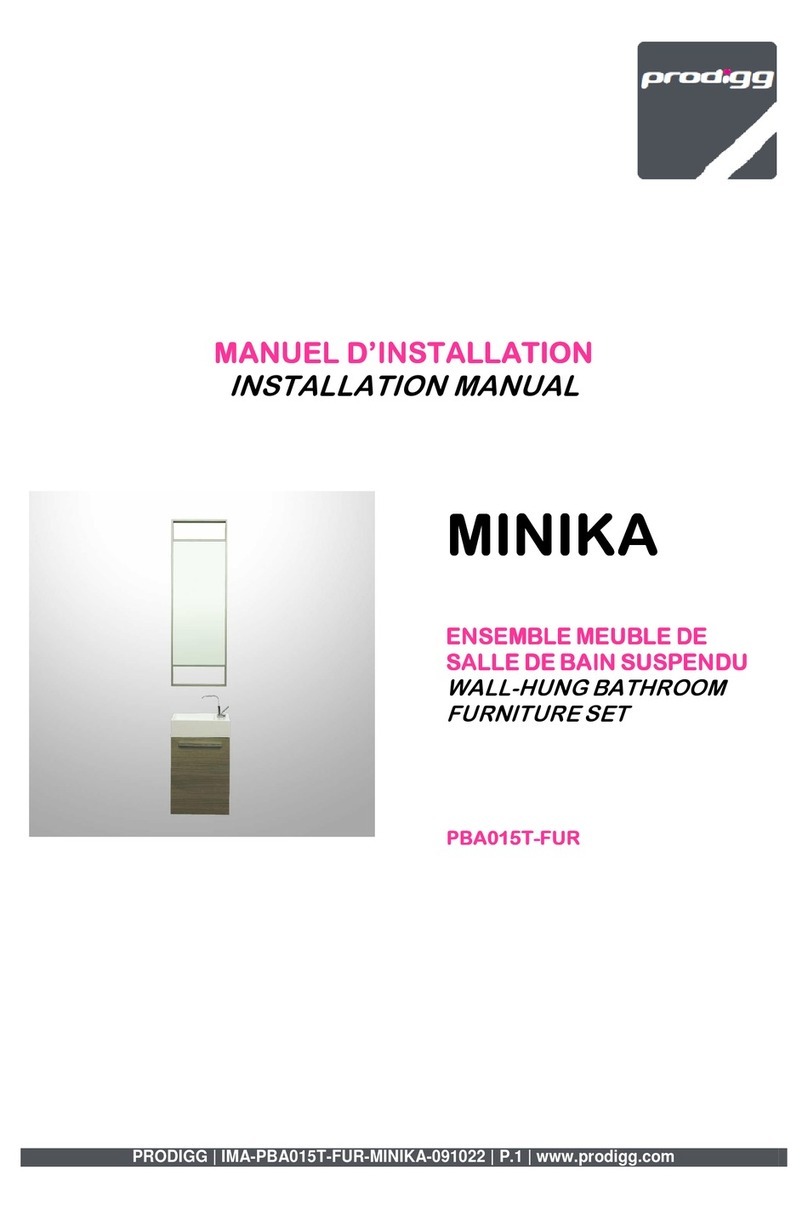
•Pageglobalcontract.com 10
• Fall 2012
GLOBALContract
INSTALLATION GUIDELINES
Wire Basket
2
1
Wire Basket
8” wide basket manages cable excess under single and back 2 back work
surfaces, as well as under storage cabinets. It is suspended on four spring steel
brackets so it can be easily unclipped to rearrange cable connections from below
the work surface or below storage units.
Wire baskets are available in incremental sizes, usually about 8” shorter then the
intended work surface / storage span.
STEP 1) Identify the correct basket length. Attach supplied spring brackets on
the basket as illustrated so that the hooks point inward. Center the basket below
work surface.
STEP 2) Secure by driving supplied screws through the four brackets into the
work surface.
Storage cabinet installation: bottoms of storage cabinets are provided with
pre-drilled holes. Attach supplied spring brackets on the basket so that the hooks
point inward. Secure the baskets by driving supplied screws through the four
brackets into the storage cabinet’s bottom.
Long Wire Baskets can span under several storage cabinets. As a general rule,
specify Cable Basket min. 8” shorter then the storage cabinet spine assembly.
NOTE: Install dividers, storage and table top accessories prior to proceeding with the
installation of below surface power trough.
A) SUPPORTING STRUCTURE
Identify length and location of required Power Troughs and position them in ac-
cordance with lay-out plans. Install brackets on Power Troughs. Make sure that all
Power Troughs are securely connected before proceeding with installation of electrical
components.
B) ELECTRIC COMPONENTS
Identify type and location of required electrical components and position them in
accordance with lay-out plans. Secure Power Feed to the Power Trough brackets
(ensure that the liquid tight whip is long enough to reach the power source / floor
monument. Proceed with connecting Power Distribution Assemblies and Jumper
Harnesses on the ground, just below their future location. Install Duplex Receptacles
as specified. Secure interconnected electrical components to Power Trough.
C) DATA/COMMUNICATION
Arrange cables below their future location into bundles under the tables. Install cable
terminals and snap Terminal Plates into the openings in the middle of Power Trough.
Proceed from one side of the table assembly, lift cable bundles and secure them to the
Power Trough with extruded Data Cable Manager.
D) CONNECT TO THE BUILDING POWER SUPPLY
It is recommended that the connection to the building power supply be made under
the supervision of a licensed electrician and according to applicable codes and regula-
tions. Connection to the building power supply must be done by a licensed electrician.
Do not connect or disconnect components while the system is under load. Disconnect
the main power before servicing or reconfiguration.
E) WALK THROUGH / INSTALLATION INSPECTION
Below Worksurface Power Trough
A
A
B
B
STEP 1: Install four brackets (two pairs of left and right brackets are required). Below
work surface Power troughs are provided with 4 pairs of mounting holes to accom-
modate the brackets at various table leg positions.
Two of back-to-back tables use narrower supporting beams and the legs on both
sides are, therefore, inset below work surfaces. To fit the Trough and brackets into this
narrower space use a pair of mounting holes “B - B” to secure below work surface
Power Trough to a single assembly of two of back-to-back tables.
A back-to-back table assembly at the beginning of a multiple table run employs
slightly longer supporting beams to accommodate the legs on the ‘start-of-a-run’ side
to be inset below work surfaces, and the shared leg to be right below the seam of
two adjacent work surfaces. Use a pair of mounting holes “B” to secure brackets to
the Power Trough on the ‘start-of-a-run’ side, use the pair of mounting holes “A” to
secure brackets to the Power Trough on the ‘shared’ leg side.
A back-to-back table assembly in the middle of a multiple table run employs the lon-
gest, interconnecting supporting beams - placing shared legs right under the seams
of adjacent work surfaces on both sides.
Use mounting holes “A” on both sides to secure brackets to the Power Trough.
Position the Power Trough over the brackets so that threaded studs on the brackets pro-
trude through the holes in the Power Trough. Secure brackets with supplied thumb nuts.
Below Worksurface Power Trough Installation




















